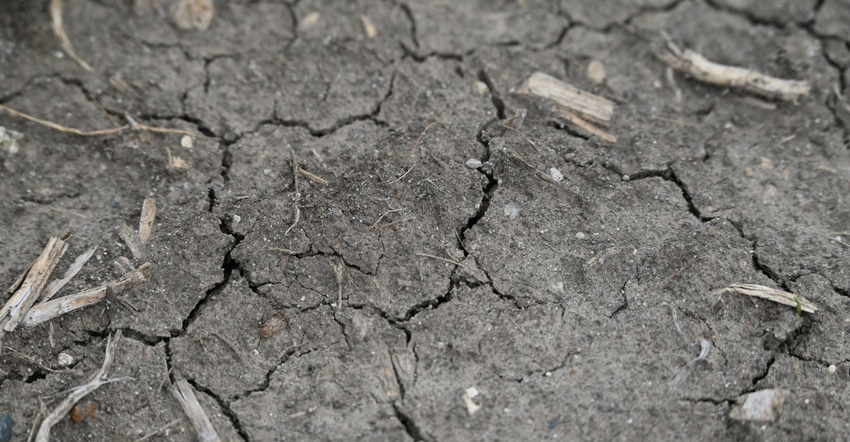August 8, 2022

Drought conditions continue to spread to more counties in Iowa, which has led the Iowa Farm Service Agency to release Conservation Reserve Program acres for emergency haying and grazing, especially in the northwest corner.
Matt Russell, Iowa’s state Farm Service Agency executive director, says eligible producers who are interested in emergency haying and grazing of CRP must first request approval of the acres to move forward. “Eligible producers must gain approval and obtain a modified conservation plan from the Natural Resources Conservation Service that includes haying and grazing provisions. Current provisions allow landowners and producers approved by the local FSA office for haying or grazing to begin Aug. 2.”
The counties approved for emergency haying or grazing include Buena Vista, Clay, Ida, Palo Alto, Pocahontas and Sac. Six additional counties are restricted under emergency haying criteria based on Livestock Forage Program triggers, which include Cherokee, Monona, O’Brien, Plymouth, Sioux and Woodbury.
Secretary of Agriculture Mike Naig says the lack of rainfall across much of the state has led to an expansion of drought conditions. Hot and dry weather is expected to persist in the coming weeks, with only short-term outlooks for a chance of moisture.
Dry soil
Lack of rain has made topsoil and subsoil moisture lacking across the state. Topsoil moisture conditions were rated 17% “very short” and 32% “short” as of August 1. Subsoil moisture conditions were rated 15%
“very short” and 31% “short” for the same period. Northwest Iowa continues to be dry, as is a vast majority of southern Iowa.
Extreme drought conditions (D3) cover all of Plymouth County, as well as parts of Sioux, Cherokee and Woodbury counties. Severe drought conditions (D2) span Sioux, O’Brien, Clay, Palo Alto, Pocahontas, Buena Vista, Cherokee, Ida, Woodbury and Monona counties, according to the July 28 edition of the U.S. Drought Monitor.
Counties automatically are approved for CRP emergency haying and grazing when they reach D2 level on the U.S. Drought Monitor and are out of the primary nesting season, which is May 15 through Aug. 1. Emergency haying authorizations end on Aug. 31, and emergency grazing will end Sept. 30.
Nearly 87% of corn is at silking stage or beyond, which is slightly behind the five-year average. Thirty percent of the corn crop has reached the dough stage or beyond, which is close to the average. More than 80% of Iowa’s soybeans are blooming, which is slightly behind the average.
Pasture and livestock have been affected by the hot and dry conditions, which are expected to continue on into August. Continual lack of moisture could affect yields, and experts stress the need to scout fields for disease or insect pressure.
About the Author(s)
You May Also Like






